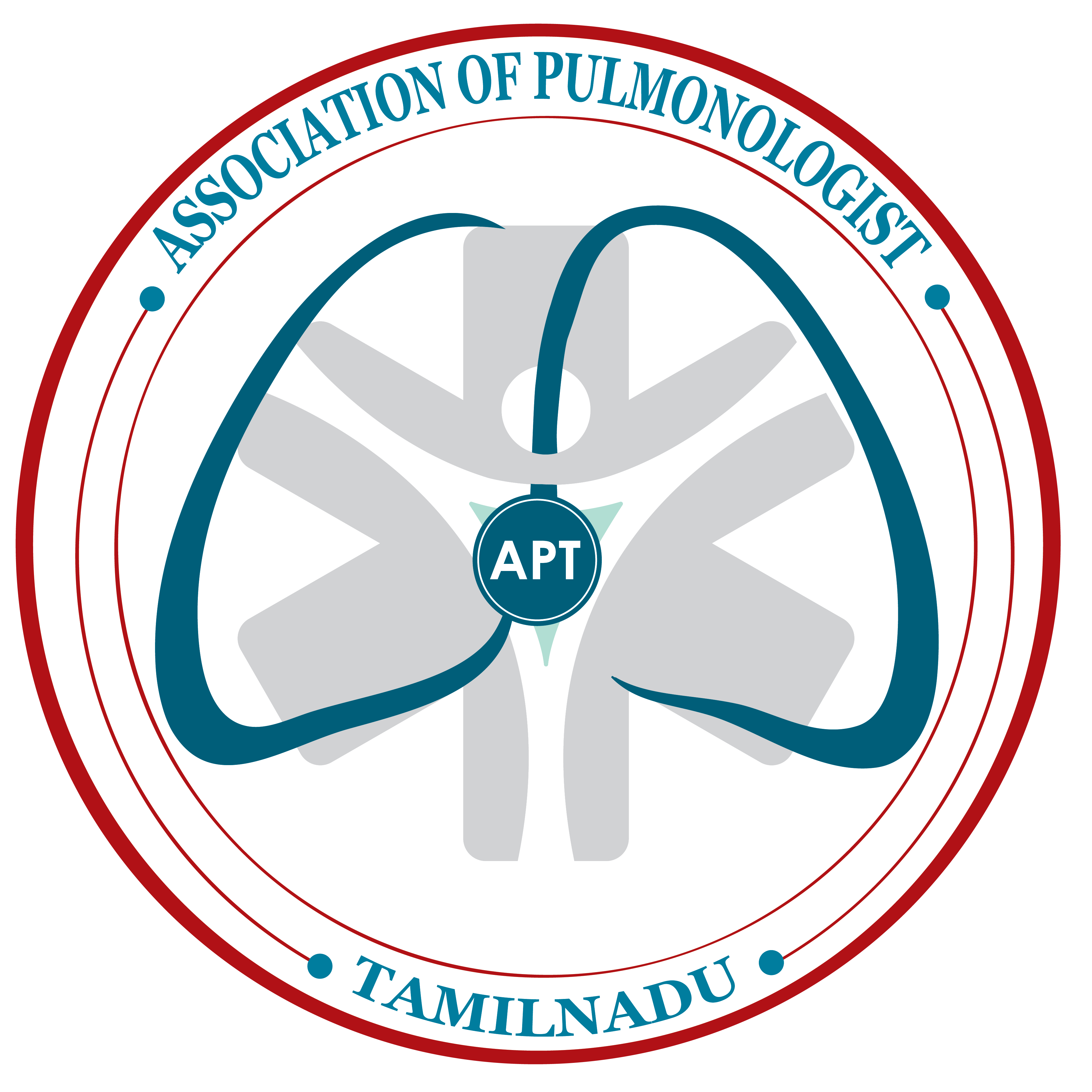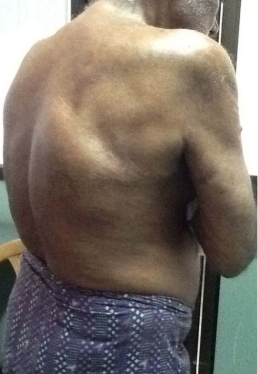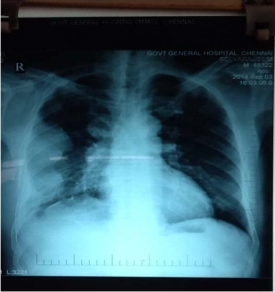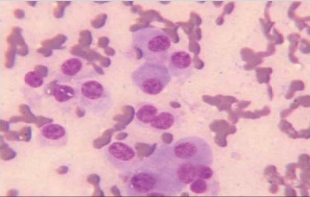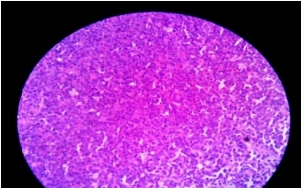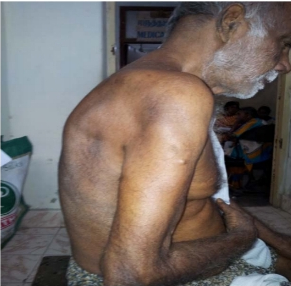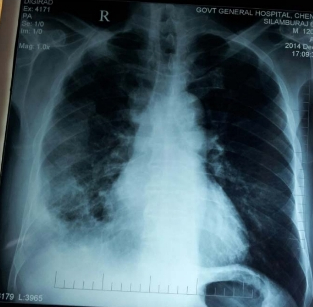Reference
1. Wychulis A. Surgical treatment of mediastinal tumors. A 40 year experience. J ThoracCardiovasc Surg. 1971;62:379-92.
2. Shabb NS, Fahl M, Shabb B, Haswani P, Zaatari G. Fine‐needle aspiration of the mediastinum: A clinical, radiologic, cytologic, and histologic study of 42 cases. Diagnostic cytopathology. 1998 Dec;19(6):428-36.
3. Wright CD, Mathisen DJ. Mediastinal tumors: diagnosis and treatment. World journal of surgery. 2001 Feb 1;25(2):204-9.
4. Silverman NA, Sabiston Jr DC. Mediastinal masses. Surgical Clinics of North America. 1980 Aug 1;60(4):757-77.
5. Roux BI, Kallichurum S, Shama DM. Mediastinal cysts and tumors. Current problems in surgery. 1984 Nov 1;21(11):6-77.
6. Cohen AJ, Thompson L, Edwards FH, Bellamy RF. Primary cysts and tumors of the mediastinum. The Annals of thoracic surgery. 1991 Mar 1;51(3):378-86.
7. Williams PL, Warwick R, Dyson M, Bannister LH. Splanchnology. In: Gray’s anatomy. 37th ed. New York, NY: Churchill Livingstone, 1989;1245–1475.
8. Shields TW. Primary tumours and cysts of the mediastinum. In: Shields TW, ed. General thoracic surgery. Philadelphia, Pa: Lea &Febiger, 1983; 927–954.
9. Fraser RS, Müller NL, Colman N, Paré PD, eds. The mediastinum.In: Fraser and Paré’s diagnosis of diseases of the chest. 4th ed. Philadelphia, Pa: Saunders, 1999; 196–234. Book ref
10. Fraser RG, Paré PA, eds. The normal chest. In: Diagnosis of diseases of the chest. 2nd ed. Philadelphia, Pa: Saunders, 1977; 1–183.
11. Felson B. Chest roentgenology. Philadelphia, Pa: Saunders, 1973.
12. Heitzman ER. The mediastinum. 2nd ed. New York, NY: Springer-Verlag, 1988.
13. Zylak CJ, Pallie W, Jackson R. Correlative anatomy and computed tomography: a module on the mediastinum. Radiographics. 1982 Nov;2(4):555-92.
14. Whitten CR, Khan S, Munneke GJ, Grubnic S. A diagnostic approach to mediastinal abnormalities. Radiographics. 2007 May;27(3):657-71.
15. Sharma P, Jha V, Kumar N, Kumar R, Mandal A. Clinicopathological analysis of mediastinal masses: a mixed bag of non-neoplastic and neoplastic etiologies. Turkish Journal of Pathology. 2017 Jan 1;33(1):037-46.
16. Dixit R, Shah NS, Goyal M, Patil CB, Panjabi M, Gupta RC, Gupta N, Harish SV. Diagnostic evaluation of mediastinal lesions: Analysis of 144 cases. Lung India: official organ of Indian Chest Society. 2017 Jul;34(4):341
17. Williams PL, Warwick R, Dyson M, Bannister LH. Splanchnology. In: Gray’s anatomy. 37th ed. New York, NY: Churchill Livingstone, 1989; 1245–1475.
18. Naruke T, Suemasu K, Ishikawa S. Lymph node mapping and curability at various levels of metastasis in resected lung cancer. The Journal of thoracic and cardiovascular surgery. 1978 Dec;76(6):832-9.
19. Donahue JM, Nichols FC. Primary mediastinal tumors and cysts and diagnostic investigation of mediastinal masses. Shields TW, Lo Cicero III J, Reed CE, Feins RH, editors. General Thoracic Surgery. Philadelphia: Lippincott Williams & Wilkins. 2009:2489-94.
20. Davis RD, Oldham HN, Sabiston DC. Primary cysts and neoplasms of the mediastinum: recent changes in clinical presentation, methods of diagnosis, management, and results. The Annals of thoracic surgery. 1987 Sep 1;44(3):229-37.
21. Henschke CI, Lee IJ, Wu N, Farooqi A, Khan A, Yankelevitz D, Altorki NK. CT screening for lung cancer: prevalence and incidence of mediastinal masses. Radiology. 2006 May;239(2):586-90.
22. Aroor AR, Rama Prakasha S, Seshadri S, Teerthanath S, Raghuraj U. A study of clinical characteristicsof mediastinal mass. Journal of clinical and diagnostic research: JCDR. 2014 Feb;8(2):77.
23. Wilson LD, Detterbeck FC, Yahalom J. Superior vena cava syndrome with malignant causes. New England Journal of Medicine. 2007 May 3;356(18):1862-9.
24. Murray JF, Nadel JA, editors. Textbook of respiratory medicine. 6th ed. Philadelphia: W.B. Saunders; 2016: 1478–96. Book ref
25. Armstrong P. Mediastinal and hilar disorders. In: Armstrong P, Wilson AG, Dee P, Hansell DM, editors. Imaging of diseases of the chest. 3rd ed. London: Mosby; 2000: 789–892. Book ref
26. Ahn JM, Lee KS, Goo JM, Song KS, Kim SJ, Im JG. Predicting the histology of anterior mediastinal masses: comparison of chest radiography and CT. Journal of thoracic imaging. 1996;11(4):265-71.
27. Naidich DP, Zerhouni EA, Siegelman SS, Kuhn JP. Computed tomography and magnetic resonance of the thorax.
28. Silvestri GA, Gonzalez AV, Jantz MA, Margolis ML, Gould MK, Tanoue LT, Harris LJ, Detterbeck FC. Methods for staging non-small cell lung cancer: diagnosis and management of lung cancer: American College of Chest Physicians evidence-based clinical practice guidelines. Chest. 2013 May 1;143(5):e211S-50S.
29. Gould MK, Kuschner WG, Rydzak CE, Maclean CC, Demas AN, Shigemitsu H, Chan JK, Owens DK. Test performance of positron emission tomography and computed tomography for mediastinal staging in patients with non–small-cell lung cancer: a metaanalysis. Annals of internal medicine. 2003 Dec 2;139(11):879-92.
30. Ratto GB, Frola C, Cantoni S, Motta G. Improving clinical efficacy of computed tomographic scan in the preoperative assessment of patients with non-small cell lung cancer. The Journal of thoracic and cardiovascular surgery. 1990 Mar;99(3):416-25.
31. McLoud TC, Bourgouin PM, Greenberg RW, Kosiuk JP, Templeton PA, Shepard JA, Moore EH, Wain JC, Mathisen DJ, Grillo HC. Bronchogenic carcinoma: analysis of staging in the mediastinum with CT by correlative lymph node mapping and sampling. Radiology. 1992 Feb;182(2):319-23.
32. Tomiyama N, Honda O, Tsubamoto M, Inoue A, Sumikawa H, Kuriyama K, Kusumoto M, Johkoh T, Nakamura H. Anterior mediastinal tumors: diagnostic accuracy of CT and MRI. European journal of radiology. 2009 Feb 1;69(2):280- 8.
33. Ackman JB, Wu CC. MRI of the thymus. American Journal of Roentgenology. 2011 Jul;197(1):W15-20.
34. Ackman JB. MR imaging of mediastinal masses. Magnetic Resonance Imaging Clinics. 2015 May 1;23(2):141-64.
35. Carter BW, Betancourt SL, Benveniste MF. MR imaging of mediastinal masses. Topics in Magnetic Resonance Imaging. 2017 Aug 1;26(4):153-65.
36. Inaoka T, Takahashi K, Mineta M, Yamada T, Shuke N, Okizaki A, Nagasawa K, Sugimori H, Aburano T. Thymic hyperplasia and thymus gland tumors: differentiation with chemical shift MR imaging. Radiology. 2007 Jun;243(3):869-76.
37. Takahashi K, Al‐Janabi NJ. Computed tomography and magnetic resonance imaging of mediastinal tumors. Journal of magnetic resonance imaging. 2010 Dec;32(6):1325-39.
38. Kubota K, Yamada S, Kondo T, Yamada K, Fukuda H, Fujiwara T, Ito M, Ido T. PET imaging of primary mediastinal tumours. British journal of cancer. 1996 Apr;73(7):882.
39. Tatci E, Ozmen O, Dadali Y, Biner IU, Gokcek A, Demirag F, Incekara F, Arslan N. The role of FDG PET/CT in evaluation of mediastinal masses and neurogenic tumors of chest wall. International journal of clinical and experimental medicine. 2015;8(7):11146.
40. Lee BE, von Haag D, Lown T, Lau D, Calhoun R, Follette D. Advances in positron emission tomography technology have increased the need for surgical staging in non–small cell lung cancer. The Journal of thoracic and cardiovascular surgery. 2007 Mar 1;133(3):746-52.
41. National Comprehensive Cancer Network: NCCN clinical practice guidelines in oncology: lung cancer screening. Version 1.2013 <http://www.nccn.org/professionals/physician_gls/pdf/lung_screening.pdf>.Accessed June 12, 2013.
42. Puri V, Meyers BF. Utility of positron emission tomography in the mediastinum: moving beyond lung and esophageal cancer staging. Thoracic Surgery Clinics. 2009 Feb 1;19(1):7-15.
43. Sung YM, Lee KS, Kim BT, Choi JY, Shim YM, Chin AY. 18F-FDG PET/CT of thymic epithelial tumors: usefulness for distinguishing and staging tumor subgroups. Journal of Nuclear Medicine. 2006 Oct 1;47(10):1628-34.
44. Treglia G, Sadeghi R, Giovanella L, Cafarotti S, Filosso P, Lococo F. Is 18F-FDG PET useful in predicting the WHO grade of malignancy in thymic epithelial tumors? A meta-analysis. Lung Cancer. 2014 Oct 1;86(1):5-13.
45. Carter BW, Benveniste MF, Madan R, Godoy MC, de Groot PM, Truong MT, Rosado-de-Christenson ML, Marom EM. ITMIG classification of mediastinal compartments and multidisciplinary approach to mediastinal masses. Radiographics. 2017 Jan 27;37(2):413-36.
46. Shure D, Fedullo PF. The role of transcarinal needle aspiration in the staging of bronchogenic carcinoma. Chest. 1984 Nov 1;86(5):693-6.
47. Schenk DA, Bower JH, Bryan CL, Currie RB, Spence TH, Duncan CA, Myers DL, Sullivan WT. Transbronchial needle aspiration staging of bronchogenic carcinoma. American Review of Respiratory Disease. 1986 Jul;134(1):146-8.
48. Rintoul RC, Tournoy KG, El Daly H, Carroll NR, Buttery RC, Van Kralingen K, van Meerbeeck JP, Rabe KF, Annema JT. EBUS-TBNA for the clarification of PET positive intra-thoracic lymph nodes—an international multi-centre experience. Journal of Thoracic Oncology. 2009 Jan 1;4(1):44-8.
49. Herth FJ, Becker HD, Ernst A. Ultrasound-Guided Transbronchial Needle Aspiration*: An Experience in 242 Patients. Chest. 2003 Feb 1;123(2):604-7
50. Yasufuku K, Nakajima T, Motoori K, Sekine Y, Shibuya K, Hiroshima K, Fujisawa T. Comparison of endobronchial ultrasound, positron emission tomography, and CT for lymph node staging of lung cancer. Chest. 2006 Sep 1;130(3):710-8.
51. Yasufuku K, Nakajima T, Fujiwara T, Chiyo M, Iyoda A, Yoshida S, Suzuki M, Sekine Y, Shibuya K, Yoshino I. Role of endobronchial ultrasound-guided transbronchial needle aspiration in the management of lung cancer. General thoracic and cardiovascular surgery. 2008 Jun 1;56(6):268-76.
52. Tremblay A, Stather DR, MacEachern P, Khalil M, Field SK. A randomized controlled trial of standard vs endobronchial ultrasonography-guided transbronchial needle aspiration in patients with suspected sarcoidosis. Chest. 2009 Aug 1;136(2):340-6.
53. Navani N, Lawrence DR, Kolvekar S, Hayward M, McAsey D, Kocjan G, Falzon M, Capitanio A, Shaw P, Morris S, Omar RZ. Endobronchial ultrasound–guided transbronchial needle aspiration prevents mediastinoscopies in the diagnosis of isolated mediastinal lymphadenopathy: a prospective trial. American journal of respiratory and critical care medicine. 2012 Aug 1;186(3):255-60.
54. Krasnik M. Endoscopic transesophageal and endoscopic transbronchial real-time ultrasound-guided biopsy. Respiration. 2003;70(3):293-8.
55. Gress FG, Savides TJ, Sandler A, Kesler K, Conces D, Cummings O, Mathur P, Ikenberry S, Bilderback S, Hawes R. Endoscopic ultrasonography, fine-needle aspiration biopsy guided by endoscopic ultrasonography, and computed tomography in the preoperative staging of non-small-cell lung cancer: a comparison study. Annals of internal medicine. 1997 Oct 15;127(8_Part_1):604-12.
56. Akamatsu H, Terashima M, Koike T, Takizawa T, Kurita Y. Staging of primary lung cancer by computed tomography-guided percutaneous needle cytology of mediastinal lymph nodes. The Annals of thoracic surgery. 1996 Aug 1;62(2):352-5.
57. Moinuddin SM, Lee LH, Montgomery JH. Mediastinal needle biopsy. American journal of roentgenology. 1984 Sep 1;143(3):531-2.
58. Protopapas Z, Westcott JL. Transthoracic hilar and mediastinal biopsy. Radiologic Clinics of North America. 2000 Mar 1;38(2):281-91.
59. Wiersema MJ, Vazquez-Sequeiros E, Wiersema LM. Evaluation of mediastinal lymphadenopathy with endoscopic US-guided fine-needle aspiration biopsy. Radiology. 2001 Apr;219(1):252-7.
60. Gupta S, Seaberg K, Wallace MJ, Madoff DC, Morello Jr FA, Ahrar K, Murthy R, Hicks ME. Imaging-guided percutaneous biopsy of mediastinal lesions: different approaches and anatomic considerations. Radiographics. 2005 May;25(3):763-86.
61. Singh HK, Silverman JF, Powers CN, Geisinger KR, Frable WJ. Diagnostic pitfalls in fine‐needle aspiration biopsy of the mediastinum. Diagnostic cytopathology. 1997 Aug;17(2):121-6.
62. Assaad MW, Pantanowitz L, Otis CN. Diagnostic accuracy of image‐guided percutaneous fine needle aspiration biopsy of the mediastinum. Diagnostic cytopathology. 2007 Nov;35(11):705-9.
63. Kelemen III JJ, Naunheim KS. Minimally invasive approaches to mediastinal neoplasms. InSeminars in Thoracic and Cardiovascular surgery 2000 Oct 1 (Vol. 12, No. 4, pp. 301-306). WB Saunders.
64. Ginsberg RJ. Evaluation of the mediastinum by invasive techniques. The Surgical clinics of North America. 1987 Oct;67(5):1025-35.
65. Vallières E, Pagé A, Verdant A. Ambulatory mediastinoscopy and anterior mediastinotomy. The Annals of thoracic surgery. 1991 Nov 1;52(5):1122-6.
66. Prinz RA, Lonchyna V, Carnaille B, Wurtz A, Proye C. Thoracoscopic excision of enlarged mediastinal parathyroid glands. Surgery. 1994 Dec 1;116(6):999-1005
67. Hazelrigg SR, Landreneau RJ, Mack MJ, Acuff TE. Thoracoscopic resection of mediastinal cysts. The Annals of thoracic surgery. 1993 Sep 1;56(3):659-60.
68. Sugarbaker DJ. Thoracoscopy in the management of anterior mediastinal masses. The Annals of thoracic surgery. 1993 Sep 1;56(3):653-6.
69. Demmy TL, Krasna MJ, Detterbeck FC, Kline GG, Kohman LJ, DeCamp Jr MM, Wain JC. Multicenter VATS experience with mediastinal tumors. The Annals of thoracic surgery. 1998 Jul 1;66(1):187-92
70. Morrissey B, Adams H, Gibbs AR, Crane MD. Percutaneous needle biopsy of the mediastinum: review of 94 procedures. Thorax. 1993 Jun 1;48(6):632-7.
71. Rendina EA, Venuta F, De Giacomo T, Ciccone AM, Moretti MS, Ibrahim M, Coloni GF. Biopsy of anterior mediastinal masses under local anesthesia. The Annals of thoracic surgery. 2002 Nov 1;74(5):1720-3.
72. Strollo DC, de Christenson Lt ML, Jett JR. Primary mediastinal tumors. Part 1*: tumors of the anterior mediastinum. Chest. 1997 Aug 1;112(2):511-22.
73. Clark OH. Mediastinal parathyroid tumors. Archives of Surgery. 1988 Sep 1;123(9):1096-100.
74. Wong NA, Mihai R, Sheffield EA, Calder CJ, Farndon JR. Imprint cytology of parathyroid tissue in relation to other tissues of the neck and mediastinum. Actacytologica. 2000;44(2):109-13.
75. Beckstead JH. Alkaline phosphatase histochemistry in human germ cell neoplasms. The American journal of surgical pathology. 1983 Jun;7(4):341-9.
76. Yatabe Y, Mitsudomi T, Takahashi T. TTF-1 expression in pulmonary adenocarcinomas. The American journal of surgical pathology. 2002 Jun 1;26(6):767-73.
77. Dey P, Amir T, Al Jassar A, Al Shemmari S, Jogai S. Combined applications of fine needle aspiration cytology and Flow cytometricimmunphenotyping for diagnosis and classification of non Hodgkin Lymphoma. Cytojournal. 2006;3:24.
78. Neill JS, Silverman JF. Electron microscopy of fine‐needle aspiration biopsies of the mediastinum. Diagnostic cytopathology. 1992 May;8(3):272-7.
79. Index TB. Guidelines. Guidelines on extra-pulmonary tuberculosis for India. World Health Organization. 2016.
80. Hoerbelt R, Keunecke L, Grimm H, Schwemmle K, Padberg W. The value of a noninvasive diagnostic approach to mediastinal masses. The Annals of thoracic surgery. 2003 Apr 1;75(4):1086-90.
81. Bryan M. Burt,Joseph B. ShragerBenign and Malignant Neoplasm of the Mediastinum.Fishman’s Pulmonary Diseases and Disorders, fifth edition.82. Book ref
82. Lewis JE, Wick MR, Scheithauer BW, Bernatz PE, Taylor WF. Thymoma. A clinicopathologic review. Cancer. 1987 Dec 1;60(11):2727-43.
83. MORGENTHALER TI, BROWN LR, COLBY TV, HARPER Jr CM, COLES DT. Thymoma. InMayo Clinic Proceedings 1993 Nov 1 (Vol. 68, No. 11, pp. 1110-1123). Elsevier.
84. Mullen B, Richardson JD. Primary anterior mediastinal tumors in children and adults. The Annals of thoracic surgery. 1986 Sep 1;42(3):338-45.
85. Shamji F, Pearson FG, Todd TR, Ginsberg RJ, Ilves R, Cooper JD. Results of surgical treatment for thymoma. The Journal of thoracic and cardiovascular surgery. 1984 Jan;87(1):43-7.
86. Cohen DJ, Ronnigen LD, Graeber GM, Deshong JL, Jaffin J, Burge JR, Zajtchuk R. Management of patients with malignant thymoma. The Journal of thoracic and cardiovascular surgery. 1984 Feb;87(2):301-7.
87. Silverman NA, Sabiston Jr DC. Mediastinal masses. Surgical Clinics of North America. 1980 Aug 1;60(4):757-77.
88. Gerein AN, Srivastava SP, Burgess J. Thymoma: a ten year review. The American Journal of Surgery. 1978 Jul 1;136(1):49-53.
89. Osserman KE. Studies in myasthenia gravis-review of twenty year experience in over 1200 patients. Mt Sinai J Med. 1971;38:497-537.
90. Elias SB, Appel SH, Lennon VA, Jones G, Howard F, Elveback L, Drachman DB, Adams RN, Josifek LF, Self SG. Autoantibodies to acetylcholine receptors in myasthenia gravis. New England Journal of Medicine. 1983 Feb 17;308(7):402-3.
91. HOWARD JR FM, Lennon VA, Finley JO, Matsumoto J, Elveback LR. Clinical Correlations of Antibodies That Bind, Block, or Modulate Human Acetylcholine Receptors in Myasthenia Gravis a. Annals of the New York Academy of Sciences. 1987 Aug;505(1):526-38.
92. Rosado-de-Christenson ML, Galobardes J, Moran CA. Thymoma: radiologic-pathologic correlation. Radiographics. 1992 Jan;12(1):151-68.
93. Strickler JG, Kurtin PJ. Mediastinal lymphoma. In Seminars in diagnostic pathology 1991 Feb 1 (Vol. 8, No. 1, pp. 2-13). Elsevier.
94. Filly R, Blank N, Castellino RA. Radiographic distribution of intrathoracic disease in previously untreated patients with Hodgkin’s disease and nonHodgkin’s lymphoma. Radiology. 1976 Aug;120(2):277-81.
95. Costello P, Jochelson M. Lymphoma of the mediastinum and lung. Radiology: diagnosis, imaging, intervention. 1996;1:1-3.
96. Schomberg PJ, Evans RG, O’connell MJ, White WL, Banks PM, Ilstrup DM, Earle JD. Prognostic significance of mediastinal mass in adult Hodgkin’s disease. Cancer. 1984 Jan 15;53(2):324-8.
97. Mann RB, Jaffe ES, Berard CW. Malignant lymphomas– a conceptual understanding of morphologic diversity. A review. The American journal of pathology. 1979 Jan;94(1):105.
98. Castellino RA, Blank N, Hoppe RT, Cho C. Hodgkin disease: contributions of chest CT in the initial staging evaluation. Radiology. 1986 Sep;160(3):603-5.
99. Hopper KD, Diehl LF, Lesar M, Barnes M, Granger E, Baumann J. Hodgkin disease: clinical utility of CT in initial staging and treatment. Radiology. 1988 Oct;169(1):17-22.
100. Ellert J, Kreel L. The role of computed tomography in the initial staging and subsequent management of the lymphomas. Journal of computer assisted tomography. 1980 Jun;4(3):368-91.
101. McLoud TC, Meyer JE. Mediastinal metastases. Radiologic clinics of North America. 1982 Sep;20(3):453.
102. Filly R, Blank N, Castellino RA. Radiographic distribution of intrathoracic disease in previously untreated patients with Hodgkin’s disease and nonHodgkin’s lymphoma. Radiology. 1976 Aug;120(2):277-81.
103. Medford AR, Agrawal S. Single bronchoscope combined endoscopic-endobronchial ultrasoundguided fine-needle aspiration for tuberculous mediastinal nodes. Chest. 2010 Nov 1;138(5):1274.
104. Wheat LJ, Conces D, Allen SD, Blue-Hnidy D, Loyd J. Pulmonary histoplasmosis syndromes: recognition, diagnosis, and management. InSeminars in respiratory and critical care medicine 2004 Apr (Vol. 25, No. 02, pp.129-144). Copyright© 2004 by Thieme Medical Publishers, Inc., 333 Seventh Avenue, New York, NY 10001, USA.
105. Cioffi U, Bonavina L, De Simone M, Santambrogio L, Pavoni G, Testori A, Peracchia A. Presentation and surgical management of bronchogenic and esophageal duplication cysts in adults. Chest. 1998 Jun 1;113(6):1492-6.
106. Moran CA, Walsh G, Suster S, Kaiser L. Thymomas II: a clinicopathologic correlation of 250 cases with a proposed staging system with emphasis on pathologic assessment. American journal of clinical pathology. 2012 Mar 1;137(3):451-61.
107. Reed JC, Hallet KK, Feigin DS. Neural tumors of the thorax: subject review from the AFIP. Radiology. 1978 Jan;126(1):9-17.
108. Aughenbaugh GL. Thoracic manifestations of neurocutaneous diseases. Radiologic clinics of NorthAmerica. 1984 Sep;22(3):741-56.
109. Coleman BG, Arger PH, Dalinka MK, Obringer AC, Raney BR, Meadows AT. CT of sarcomatous degeneration in neurofibromatosis. American Journal of Roentgenology. 1983 Feb 1;140(2):383-7.

